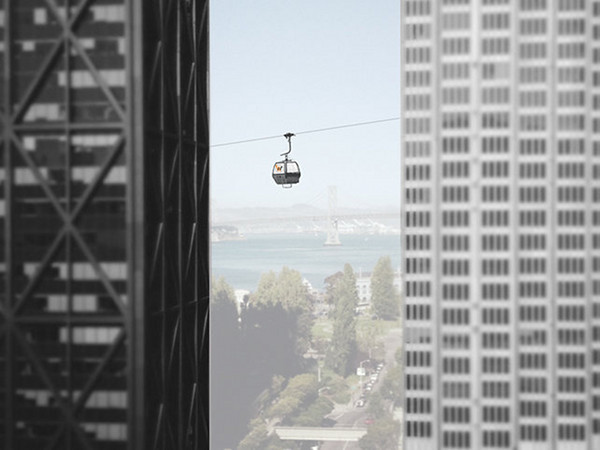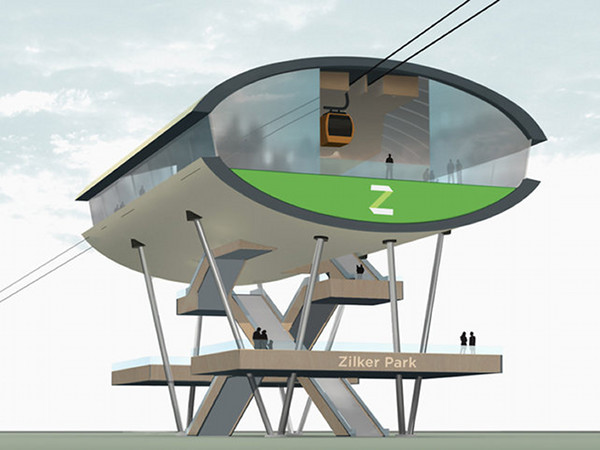Close your eyes and think back to when you were a kid. How did you imagine the City of the Future? Were there jet-packs and freeze-dried food? A bubble protecting a thriving Martian metropolis? But more to the point here — were there mass transit air trams?
If so, the City of the Future (at least in this respect) may soon be Austin, Texas.

Fast Co.Design reports that Frog Principal Designer Michael McDaniel recently unveiled an ambitious plan for Austin called the Wire at PSFK’s recent conference in San Francisco. The Wire proposes a network of air trams over the city (which has a current contract with Frog) composed of 3S detachable gondolas connecting neighborhoods throughout the city.
Forget the lengthy workarounds for highly congested areas of the city — cyclists and pedestrians would be able to simply hop on the tram, and hop off decidedly closer to their destinations. McDaniel sees a big advantage in that “detachable” part of the equation as well, as this allows for the addition of more gondolas during rush hour, which can then be removed during non-peak times. McDaniel credits the city of Portland as providing a precedent for the project, calling its aerial tram a “huge success” (though he may or may not be aware of some of the controversies that dogged that project).
The aerial tram concept may just offer a workable solution for cities the size of Austin, which tend to face some real hurdles in developing any sort of mass transit system beyond that trusty urban stand by, the bus. That’s because any type of light rail or street car proposal often comes up against the major costs (and legalities) of acquiring land rights, which can be a maddenly slow process, and an expensive one. If a city tries to circumvent some of that red tape by building a subway system underground, construction workers may rejoice at the years of guaranteed work, but taxpayers often balk at the costs
An aerial tram, in contrast, has far less of a physical footprint, requiring only space for riders to hop on and hop off. Take a ride on Portland’s aerial tram on a weekend, and it will become clear that they also tend to become tourist attractions — not only because of their relative novelty in American cities, but because of the great views they offer.

McDaniels told Fast Co.Design, “Part of the Wire concept is to circumvent [the] real estate issue by cheaply flying over the real estate, allowing more access to areas that other modes of transit simply can not provide for the same costs. Once you couple that type of core circulator with an Amsterdam-style city bike program, under single fare, you get a door-to-door transit system that is implementable today.” He goes on to note that the idea is not to pull pedestrians and cyclists out of the mix of traffic at the street level, but rather to offer them a series of strategic “shortcuts” that allow them to easily navigate the city as a whole.
After the Wire’s public debut at the beginning of this month, the team behind the design is planning to meet with officials from the City of Austin as well as gondola manufacturers concerning its feasibility.